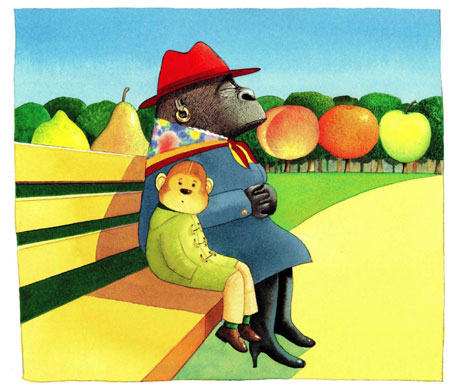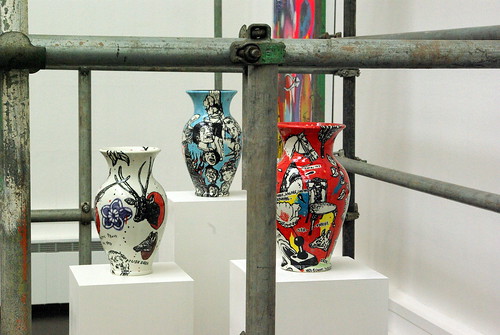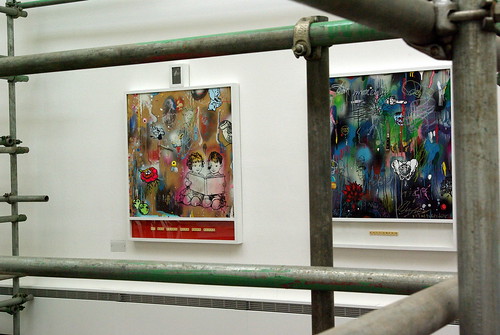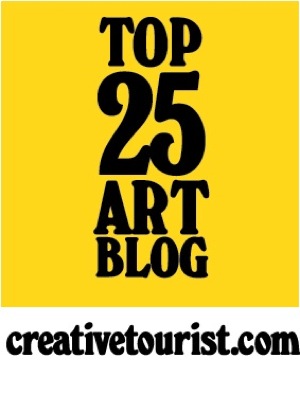
This week I had my first private view experience at the Serpentine Gallery, for the opening of the Gustav Metzger retrospective exhibition Decades 1959-2009. I was a bit disappointed not to spot any celebrity gallery-goers (my private view partner-in-crime Lisa tells me she spotted Karl Lagerfeld and Stella McCartney at the last Serpentine opening) but enjoyed soaking in the atmosphere – al fresco drinks in the pavilion, and lots of impressive designer footwear on display – and of course, checking out the work itself!
Manchester folks may well remember Metzger as the artist responsible for Flailing Trees, the public artwork installed in the Manchester Peace Gardens during this year’s Manchester International Festival, which I blogged about very briefly back here, and have subsequently been acquired by the Whitworth Art Gallery. Metzger’s “inverted trees” prompted a mixed response from festival-goers: whilst some people loved them, others were notably underwhelmed.
The upside down trees are back in this show, alongside a whole range of other works, charting the development of Metzger’s distinctive “auto-destructive” practice: stacks of newspapers are exhibited alongside a smashed-up car wreck, whilst German racial laws on Jews from the 1930s and 1940s are displayed on a bright yellow wall. There is a film of Metzger creating auto-destructive art in the 1960s by hurling acid at a wall, and an interactive work in which gallery visitors are invited to crawl underneath an enormous green sheet where they will encounter enlarged photographs of Jews on the streets of Vienna in 1938. Throughout the exhibition, Metzger’s works remain highly politicised, touching on everything from nuclear weapons to climate change, forcefully exposing and documenting the excesses of consumerism, the destructive forces of capitalism, and the violence of 20th century history.
Yet whilst there’s no doubt that Metzger’s work is very potent, dealing with challenging and powerful ideas, ultimately I have to admit that like Flailing Trees, much of this exhibition left me mysteriously feeling a little cold. Even the most highly charged pieces in the show failed to provoke an emotive response. I'm not sure what it says about me and my attitude to art, but my favourite piece was in fact the least overtly political in the whole show – the Liquid Crystal Environment light projection, a darkened space where gently swirling colours and slowly mutating patterns were projected on the walls.
But regardless of my personal, intuitive response to these works, ultimately I would have to agree with Jonathan Jones, writing in the Guardian, who sums up Metzger’s work much better than I can: “at once playful and aggressive, plainly sincere and powerfully, brutally direct.”
Gustav Metzger: Decades 1959-2009 is showing at The Serpentine until 8 November.
[Image: Gustav Metzger's Liquid Crystal Environment commissioned for Tate Liverpool, via The Serpentine website]



























